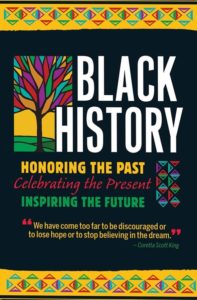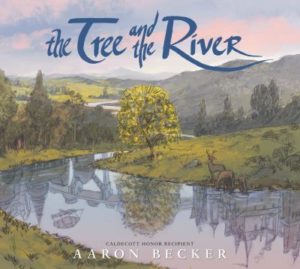Search Smiley Library’s comprehensive reading list below for adults, young adults, and children providing access to learning more about why we need Earth Day, and how to enjoy it…
The theme for World Earth Day 2024 is Planet vs. Plastics. The theme aims to bring attention to the serious issue of plastic pollution and how it harms nature. For Earth Day 2024, EARTHDAY.ORG aims to end plastic for planetary health and demands a 60 per cent reduction in the production of all plastics by 2040.
 Celebrate Earth Day in Redlands, Saturday, April 20th
Celebrate Earth Day in Redlands, Saturday, April 20th
♥ Participate in your choice of a variety (dozens!) of hands-on events around town sponsored by ANCA (Accelerate Neighborhood Climate Action) and many other Redlands environmental organizations. Refer to www.redlandsearthday.org/ for more information, and to register.
♥ Learn more about why so many have been observing Earth Day since 1970; take a look at “A Brief History of Earth Day,” a short, enlightening PowerPoint presentation by ANCA member Andy Green.
Enjoy the Great Outdoors in a state park in honor of Earth Day ~
Visit participating California state parks for free with your library card by checking out a vehicle’s day-use state park pass!
♥ California State Library Parks Pass / California State Library, Parks Pass Program, 2022
Follow any of these links to our catalog to read more about it, and to place on hold.
READING LIST OF BOOKS FOR ADULTS:
Plastics & Recycling
- Life without plastic : the practical step-by-step guide to avoiding plastic to keep your family and the planet healthy / Plamondon, Chantal, 2017
- Plastic purge : how to use less plastic, eat better, keep toxins out of your body, and help save the sea turtles! / SanClements, Michael, 2014
- Can I recycle this? : a guide to better recycling and how to reduce single-use plastics / Romer, Jennie, 2021**
- Plastic : an autobiography / Cobb, Allison, 2021
- Living without plastic : more than 100 easy swaps for home, travel, dining, holidays, and beyond / Allen, Brigette, 2021
- **For more information on recycling in the City of Redlands, visit the City’s website, https://www.cityofredlands.org/solid-waste-recycling-services
New Book Collection
- Before it’s gone : stories from the front lines of climate change in small-town America / Vigliotti, Jonathan, 2024
- Total garbage : how we can fix our waste and heal our world / Humes, Edward, 2024
- 42 reasons to hate the universe : and one reason not to / Ferrie, Chris, 2024
- The ultimate wildlife habitat garden : attract and support birds, bees, and butterflies / Tornio, Stacy, 2024
- In search of the old ones : an odyssey among ancient trees / Fredericks, Anthony D., 2023
- Blue machine : how the ocean works / Czerski, Helen, 2023
- Guardians of the valley: John Muir and the friendship that saved Yosemite / King, Dean, 2023
-
Black earth wisdom : soulful conversations with Black environmentalists / Penniman, Leah, 2023
- The climate book / Thunberg, Greta, 2023
- I want a better catastrophe : navigating the climate crisis with grief, hope, and gallows humor : an existential manual for tragic optimists, can-do pessimists, and compassionate doomers / Boyd, Andrew, 2023
-
Home detox : make your home a healthier place for everyone who lives there / Chace, Daniella, 2023
- No miracles needed : how today’s technology can save our climate and clean our air / Jacobson, Mark Z. (Mark Zachary), 2023
- The great displacement : climate change and the next American migration / Bittle, Jake, 2023
- Toxic exposure : the true story behind the Monsanto trials and the search for justice / Nabhan, Chadi, 2023
- Urban jungle : the history and future of nature in the city / Wilson, Ben, 2023
- We are the middle of forever : Indigenous voices from Turtle Island on the changing Earth / Jamail, Dahr, 2022
- This America of ours : Bernard and Avis DeVoto and the forgotten fight to save the wild / Schweber, Nate, 2022
-
Unsettling : surviving extinction together / Weinberg, Elizabeth
- American Wildflowers: A Literary Field Guide / Barba, Susan, 2022
-
No country for eight-spot butterflies : a lyric essay / Aguon, Julian, 2022
- A poison like no other : how microplastics corrupted our planet and our bodies / Simon, Matt, 2022
- Tree thieves : crime and survival in North America’s woods / Bourgon, Lyndsie, 2022
- Regenerative fashion : a nature-based approach to fibres, livelihoods and leadership / Minney, Safia, 2022
- Vanishing sands : losing beaches to mining / Pilkey, Orrin H., 2022
- Deer man : seven years of living in the wild / Delorme, Geoffrey, 2022
- Silent spring revolution : John F. Kennedy, Rachel Carson, Lyndon Johnson, Richard Nixon, and the great environmental awakening / Brinkley, Douglas, 2022
- Remodelista the low-impact home : a sourcebook for stylish, eco-conscious living / Guralnick, Margot, 2022
- At home on an unruly planet : finding refuge on a changed Earth / Ostrander, Madeline, 2022
- Fen, bog, and swamp : a short history of peatland destruction and its role in the climate crisis / Proulx, Annie, 2022
- The petroleum papers : inside the far-right conspiracy to cover up climate change / Dembicki, Geoff, 2022
-
The nerves and their endings : essays on crisis and response / Johannesson, Jessica Gaitán, 2022
National Parks, State Parks, and other wilderness areas
- Everything left to remember : my mother, our memories, and a journey through the Rocky Mountains / Jagger, Steph, 2022
- Subpar parks / Share, Amber, 2021
- Guide to state parks of the United States / National Geographic, 2018
- 101 hikes in Southern California : exploring mountains, seashore, and desert / Schad, Jerry, 2022
- Yosemite, Sequoia & Kings Canyon National Parks / Grosberg, Michael
- Fodor’s Utah: [with Zion, Bryce Canyon, Arches, Capitol Reef & Canyonlands National Parks] / Arenas, Shelley
- Fodor’s the Complete Guide to the National Parks of the West / Arenas, Shelley
- Fodor’s the Complete Guide to the National Parks of the USA / Anderson, Karen
- National Geographic Guide to the National Parks of the United States / National Geographic Society (U.S.)
- Yosemite Wildflowers: A Field Guide to the Wildflowers of Yosemite National Park / Breckling, Barry, 2020
- The National Parks: America’s Best Idea: An Illustrated History / Duncan, Dayton, Burns, Ken, 2009
Activists, Innovators, & Inspiration
-
The world as we knew it : dispatches from a changing climate / Brady, Amy, 2022
- A bigger picture : my fight to bring a new African voice to the climate crisis / Nakate, Vanessa, 2021
- Diary of a young naturalist / McAnulty, Dara, 2021
- As the world burns : the new generation of activists and the landmark legal fight against climate change / Van der Voo, Lee, 2020
- Natural rivals : John Muir, Gifford Pinchot, and the creation of America’s public lands / Clayton, John, 2019
- Visionary women : how Rachel Carson, Jane Jacobs, Jane Goodall, and Alice Waters changed our world / Barnet, Andrea, 2018
- The wizard and the prophet : two remarkable scientists and their dueling visions to shape tomorrow’s world / Mann, Charles C., 2018
- Nature’s allies : eight conservationists who changed our world / Nielsen, Larry A., 2017
- Engineering Eden : the true story of a violent death, a trial, and the fight over controlling nature / Smith, Jordan Fisher, 2016
- Rachel Carson and her sisters : extraordinary women who have shaped America’s environment / Musil, Robert K., 2014
- The genius of Earth Day : how a 1970 teach-in unexpectedly made the first green generation / Rome, Adam, 2013
- On a farther shore : the life and legacy of Rachel Carson / Souder, William, 2012
- A force for nature : the story of NRDC and the fight to save our planet / Adams, John H. (John Hamilton), 2010
- The man from Clear Lake : Earth Day founder Gaylord Nelson / Christofferson, Bill, 2004
Animals & Plants
-
The ecology book / Coyne, Celia, 2022
- The nation of plants / Mancuso, Stefano, 2021
- Hurricane lizards and plastic squid : the fraught and fascinating biology of climate change / Hanson, Thor, 2021
- Garden allies : the insects, birds, & other animals that keep your garden beautiful and thriving /Lavoipierre, Frédérique, 2021
- Born to rewild : triumphs of a now fearless woman / Kalimian, Manda, 2021
- How to love animals : in a human-shaped world / Mance, Henry, 2021
- Iwígara : American Indian ethnobotanical traditions and science / Salmón, Enrique, 2020
- Stronghold : one man’s quest to save the world’s wild salmon / Malarkey, Tucker, 2019
- Fraser’s penguins : a journey to the future in Antarctica / Montaigne, Fen, 2010
Climate Change, Global Warming, and the effects on our environment
-
The carbon footprint of everything / Berners-Lee, Mike, 2022
- Fire and flood : a people’s history of climate change, from 1979 to the present / Linden, Eugene, 2022
- The greatest polar expedition of all time : the Arctic mission to the epicenter of climate change / Rex, Markus/ Pybus, Sarah (TRN), 2022
- The last winter : the scientists, adventurers, journeymen, and mavericks trying to save the world / Fox, Porter, 2021
- Disasterology : dispatches from the frontlines of the climate crisis / Montano, Samantha, 2021
- Overheated : how capitalism broke the planet–and how we fight back / Aronoff, Kate, 2021
- Our house is on fire : scenes of a family and a planet in crisis / Thunberg, Greta, 2020
- The fragile earth : writing from the New Yorker on climate change / Remnick, David, 2020
- The uninhabitable earth : life after warming / Wallace-Wells, David, 2019
- Wild at heart : America’s turbulent relationship with nature, from exploitation to redemption / Outwater, Alice, 2019
- Drawdown : the most comprehensive plan ever proposed to reverse global warming / Hawken, Paul, 2017
- A climate of crisis : America in the age of environmentalism / Allitt, Patrick, 2014
- An inconvenient truth : the planetary emergency of global warming and what we can do about it / Gore, Al, 2006
-
DVD: An inconvenient truth a global warning / Guggenheim, Davis, 2006
Environmental Toxins
- Toxic legacy : how the weedkiller glyphosate is destroying our health and the environment / Seneff, Stephanie, 2021
-
ContamiNation : my quest to survive in a toxic world / Jenkins, McKay, 2016
- Our daily poison : from pesticides to packaging, how chemicals have contaminated the food chain and are making us sick / Robin, Marie-Monique, 2014
- Silent spring / Carson, Rachel. Published 1962.
Hope
- The book of hope : a survival guide for trying times / Goodall, Jane, 2021
- Saving us : a climate scientist’s case for hope and healing in a divided world / Hayhoe, Katharine, 2021
- Hope matters : why changing the way we think is critical to solving the environmental crisis / Kelsey, Elin, 2020
- No one is too small to make a difference / Thunberg, Greta, 2019
- Climate of hope : how cities, businesses, and citizens can save the planet / Bloomberg, Michael, 2017
- Being the change : live well and spark a climate revolution / Kalmus, Peter, 2017
- Atmosphere of hope : searching for solutions to the climate crisis / Flannery, Tim F. (Tim Fridtjof), 2015
Mitigation, Preparation
- Electrify : an optimist’s playbook for our clean energy future / Griffith, Saul, 2021
- The new climate war : the fight to take back the planet / Mann, Michael E., 2021
- The climate diet : 50 simple ways to trim your carbon footprint / Greenberg, Paul, 2021
- How to avoid a climate disaster : the solutions we have and the breakthroughs we need / Gates, Bill, 2021
- Cómo evitar un desastre climático : las soluciones que ya tenemos y los avances que aún necesitamos / Gates, Bill, 2021
- Simply climate change / DK Publishing, Inc., editor, 2021
- How to prepare for climate change : a practical guide to surviving the chaos / Pogue, David, 2021
- What can I do? : my path from climate despair to action / Fonda, Jane, 2020
- The (almost) zero waste guide : 100+ tips for reducing your waste without changing your life / Mannarino, Melanie, 2020
- Extreme conservation : life at the edges of the world /Berger, Joel, 2018
- Climate-wise landscaping : practical actions for a sustainable future / Reed, Sue, 2018
- Sustainability made simple : small changes for big impact / Byrd, Rosaly, 2017
- Getting to green : saving nature : a bipartisan solution / Rich, Frederic C., 2016
- The planet remade : how geoengineering could change the world / Morton, Oliver, 2016
- Renewable : the world-changing power of alternative energy / Shere, Jeremy, 2013
- Growing food in a hotter, drier land : lessons from desert farmers on adapting to climate uncertainty / Nabhan, Gary Paul, 2013
- The atlas of climate change : mapping the world’s greatest challenge / Dow, Kirstin, 2011
- Urban homesteading : heirloom skills for sustainable living / Kaplan, Rachel, 2011
Pollinators: why birds, bats, butterflies, moths, flies, beetles, wasps, small mammals, and most importantly, bees are vital to our environment
- 100 plants to feed the monarch : create a healthy habitat to sustain North America’s most beloved butterfly : the Xerces Society / Lee-Mader, Eric, 2021
- Where have all the bees gone? : pollinators in crisis / Hirsch, Rebecca E., 2020
- How to attract birds to your garden / Rouse, Dan, 2020
- The pollinator victory garden : win the war on pollinator decline with ecological gardening : how to attract and support bees, beetles, butterflies, bats, and other pollinators / Eierman, Kim, 2020
- Our native bees : North America’s endangered pollinators and the fight to save them/ Embry, Paige, 2018
- 100 plants to feed the bees : provide a healthy habitat to help pollinators thrive / Lee-Mäder, Eric, 2016
The Science: let’s figure this out
- The physics of climate change / Krauss, Lawrence M., 2021
- Unsettled : what climate science tells us, what it doesn’t, and why it matters / Koonin, Steven E., 2021
- Brave green world : how science can save our planet / Forman, Christopher, 2021
- The field guide to citizen science : how you can contribute to scientific research and make a difference / Cavalier, Darlene, 2020
-
Our once and future planet : restoring the world in the climate change century / Woodworth, Paddy, 2013
- Unstoppable : harnessing science to change the world / Nye, Bill, 2015
Trees & Forests
-
Elderflora : a modern history of ancient trees / Farmer, Jared, 2022
- Forest walking : discovering the trees and woodlands of North America / Wohlleben, Peter, 2022
- The treeline : the last forest and the future of life on earth / Rawlence, Ben, 2022
- Ever green : saving big forests to save the planet / Reid, John W., 2022
- Trees in trouble : wildfires, infestations, and climate change / Mathews, Daniel, 2021
-
The songs of trees : stories from nature’s great connectors / Haskell, David George, 2017
MAGAZINES
- Audubon / National Audubon Society, <1953-current>
-
California today / Planning & Conservation League (Calif.) <1973-1980>
- Environment / Helen Dwight Reid Educational Foundation, <1993-current>
- The Mother earth news / The Mother Earth News, Inc., <1973-current>
- National Geographic / National Geographic Society (U.S.), <1905-current>
- Natural history / American Museum of Natural History, <1921-current>
- Sierra [serial (magazine)] : the Sierra Club bulletin / Sierra Club, <1985-current>

YOUNG ADULT
Fiction
- My Chemical Mountain – Vacco, Corina (YA VAC)
- The Crazy Things Girls Do for Love – Sheldon, Dyan (YA SHE)
- Salvage – Duncan, Alexandra (YA DUN)
Nonfiction
- Earth Day and the Environmental Movement : Standing Up for Earth – Peterson, Christy 394.262 P442e
- Raise Your Voice : 12 Protests that Shaped America – Kluger, Jeffrey 303.484 K713r
- America Dreaming : How Youth Changed America in the Sixties – Hill, Laban Carrick 303.48 H553a
- Rise Up and Sing! : Power, Protest, and Activism in Music – Warner, Andrea 781.64 W242r
- An Inconvenient Truth: The Crisis of Global Warming – Gore, Al 363.738 G66in
- Where Have All the Bees Gone? Pollinators in Crisis – Hirsch, Rebecca E. 595.79 H615w
Graphic Novels
- How to Fake a Moon Landing: Exposing the Myths of Science Denial – Cunningham, Daryl 001.9 C917h
CHILDREN
Picture Books
- Peppa Pig and the Earth Day Adventure – (JE PEP)
- Be a Tree – Gianferrari, Maria (JE GIA)
- Arthur Turns Green – Brown, Marc Tolon (JE BRO)
- Biscuit’s Earth Day Celebration – Capucilli, Alyssa Satin (JE CAP)
- Dear Earth…: From Your Friends in Room 5 – Dealey, Erin (JE DEA)
- These Seas Count! – Formento, Alison (JE FOR)
- A Small History of a Disagreement – Fuentes, Claudio (JE FUE)
- We Are Water Protectors – Lindstrom, Carole (JE LIN)
- Ballyhoo Bay – Sierra, Judy (JE SIE)
- Miss Fox’s Class Goes Green – Spinelli, Eileen (JE SPI)
- Greta and the Giants: Inspired by Greta Thunberg’s Stand to Save the World – Tucker Zoe (JEFO TUC)
- Just a Dream – Van Allsburg, Chris (JEFO VAN)
- Earth Day, Birthday – Wright, Maureen (JE WRI)
- My Forever Dress – Ziefert, Harriet (JE ZIE)
Chapter Books
- Willodeen – Applegate, Katherine (J APP)
- Violet Mackerel’s Pocket Protest – Branford, Anna (J BRA)
- Watch Out World, Rosy Cole is Going Green: Rosy Cole’s Bright, Though Not Exactly Popular, Ideas About Garbage, Worms, Dirt, and Other Gifts of Nature – Greenwald, Shelia (J GRE)
- Scat – Hiaasen, Carl (J HIA)
- Flush – Hiaasen, Carl (J HIA)
- Hoot – Hiaasen, Carl (J HIA)
- Save the Earth – Klein, Abby (J KLE)
- Marty McGuire Digs Worms! – Messner Kate (J MES)
Mysteries
- Nate the Great and the Earth Day Robot – Sharmat, Andrew (J M SHA)
- Cam Jansen and the Green School Mystery – Adler, David (J M ADL)
- Earth Day Escapade – Keene, Carolyn (J M KEE)
Graphic Novels
- Luz Sees the Light – Davila, Claudia 741.5 D289L
- Getting to the Bottom of Global Warming – Collins, Terry 363.738 C696g
Nonfiction
- The Wild World Handbook: How Adventurers, Artists, Scientists – and YOU – Can Protect the Earth’s Habitats – Debbink, Andrea 333.95 D35w
- It Starts with a Bee – Gallagher, Aimee 595.79 G135i
- How to Change Everything: The Young Human’s Guide to Protecting the Planet and Each Other – Klein, Naomi with Stefoff, Rebecca 363.738 K672h
- Earth Day – Cella, Clara 394.262 C33e
- Earth Day – Hooray – Murphy, Stuart 513 M597e
- What a Waste – French, Jess 363.72 F888w
- The Brilliant Deep: Rebuilding the World’s Coral Reefs – Messner, Kate 333.95 M564b
- Caillou: Every Drop Counts – Johanson, Sarah Margaret 333.91 J599c
- Sustainable Water Resources – Rooney, Anne 363.61 R674s
- One Child, One Planet: Inspiration for the Young Conservationist – Llewellyn, Bridget McGovern 363.7 L77o
- Our House in on Fire: Greta Thunberg’s Call to Save the Planet – Winter, Jeanette 333.7 W734o
- Trash Revolution: Breaking the Waste Cycle – Fyvie, Erica 363.72 F999t
- Join the No-Plastic Challenge! A First Book of Reducing Waste – Ritchie, Scot 363.72 R51j
- The Plastic Problem – Salt, Rachel 363.72 Sa37p
- Discover It Yourself: Pollution and Waste – 363.73 D631
- Taming Plastic: Stop the Pollution – Bates, Albert 363.738 B318t
- Our Environment: Everything You Need to Know – Pasquet, Jacques 577 P265o
- Climate Change: The Science Behind Melting Glaciers and Warming Oceans, with Hands-On Activities – Sneideman, Joshua 551.6 Sn26c
- If Bees Disappeared – Williams, Lily 595.79 W673i
Easy Readers
- Earth Day – McNamara, Margaret (JER MCN)
Spanish
- El Guardian del Pantano – Garrett, Ann (JSPE GAR)
- Calentamiento Global – Buchanan, Shelly (JSP 363.738 B851c)

 Two more days… Not just the Daylight Savings time change (spring forward!), but the 96th annual Academy Awards ceremony at the Dolby Theatre in Hollywood takes place this Sunday. Did your invitation get lost in the mail? Yeah, mine too. That’s O.K.—the ceremony will be televised (earlier than usual) at 4 p.m., on ABC.
Two more days… Not just the Daylight Savings time change (spring forward!), but the 96th annual Academy Awards ceremony at the Dolby Theatre in Hollywood takes place this Sunday. Did your invitation get lost in the mail? Yeah, mine too. That’s O.K.—the ceremony will be televised (earlier than usual) at 4 p.m., on ABC.








 The Association for the Study of African American Life and History, founded in 1915, assigns a theme each February for the observance of Black History Month. In 2024 the theme on which the Association is focusing is
The Association for the Study of African American Life and History, founded in 1915, assigns a theme each February for the observance of Black History Month. In 2024 the theme on which the Association is focusing is Also, don’t forget our
Also, don’t forget our  Juneteenth, on June 19
Juneteenth, on June 19 












 In remembrance and celebration of the life of the Reverend Dr. Martin Luther King, Jr., January 15, 1929 – April 4, 1968, why not read more about him? A.K. Smiley Public Library offers a variety of books, audio books, and e-books for children, teens, and adults on Dr. King.
In remembrance and celebration of the life of the Reverend Dr. Martin Luther King, Jr., January 15, 1929 – April 4, 1968, why not read more about him? A.K. Smiley Public Library offers a variety of books, audio books, and e-books for children, teens, and adults on Dr. King. We didn’t always put up our Christmas trees as early as the day after Thanksgiving (or before!) Decades ago, our forefathers brought in trees they cut, possibly from the open hills surrounding them, on Christmas Eve. Before electric lights, they may have placed candles on the trees to illuminate the long, dark night.
We didn’t always put up our Christmas trees as early as the day after Thanksgiving (or before!) Decades ago, our forefathers brought in trees they cut, possibly from the open hills surrounding them, on Christmas Eve. Before electric lights, they may have placed candles on the trees to illuminate the long, dark night. Many tree species that have populated the Earth for ages offer us the gift of wisdom, if we look closely enough. We see that California’s redwoods evolved needle-like leaves capable of absorbing fog, which spares the trees from having to transport water 350 or so feet from their roots to their uppermost branches. This fact and others are revealed in
Many tree species that have populated the Earth for ages offer us the gift of wisdom, if we look closely enough. We see that California’s redwoods evolved needle-like leaves capable of absorbing fog, which spares the trees from having to transport water 350 or so feet from their roots to their uppermost branches. This fact and others are revealed in  Peter Wohlleben (
Peter Wohlleben ( You won’t want to miss
You won’t want to miss